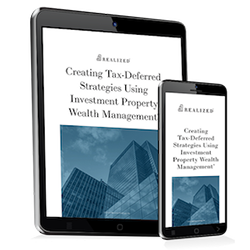
A deferred tax liability can occur when there is a timing difference between two different depreciation schedules. A business may choose straight-line depreciation (for asset book value) each year but bases its tax depreciation on the accelerated method. This will create a difference each year between the two schedules.
The earlier years will create an excess tax over the book value of an asset. So the tax payable is lower than the income tax expense. The two depreciation methods will converge in the future and cross. After that happens, in later years, the tax payable becomes more than the income tax expense, creating a tax liability.
Calculating Deferred Tax Liability
The formula for calculating deferred tax liability is:
DTL = Income Tax Expense – Taxes Payable + Deferred Tax Assets (DTA)
Where
Income Tax Expense = Taxes Payable + DTL – DTA
We will go through an example to better understand how this works. The example won’t have any DTA. To start with a very simple example, if there is no DTA and we have the following:
Income tax expense: $10,000
Income tax payable: $8,000
We end up with a DTL of $2,000.
Let’s move on to a more complex example where we create an amortization depreciation schedule. In this example, a business owner has purchased a $10,000 asset. The business tax rate is 40%. The business makes $50,000 every year.
When straight-line (SL) depreciation is subtracted each year from an asset’s value, the result is its book value. Accelerated depreciation will use the Sum of Years Digits Method, listed in parentheses next to each year.
|
Year |
Book Depreciation (SL) |
Tax Depreciation (accelerated) |
Excess Tax Over Book |
Pre-tax Book Income |
Taxable Income |
|
1 (0.333) |
$2,000 |
$3,330 |
$1,330 |
$50,000 |
$48,670 |
|
2 (0.267) |
$2,000 |
$2,670 |
$670 |
$50,000 |
$49,330 |
|
3 (0.20) |
$2,000 |
$2,000 |
$0 |
$50,000 |
$50,000 |
|
4 (0.133) |
$2,000 |
$1,330 |
($670) |
$50,000 |
$50,670 |
|
5 (0.067) |
$2,000 |
$670 |
($1,330) |
$50,000 |
$51,330 |
You can see that the Excess Tax Over Book values are equal in years 1 and 5, then years 2 and 4. When those values are added, the net result is $0. The excess exists only before the convergence of the two depreciation methods in year 3. After year 3, the excess turns to a negative, creating a tax liability.
We can see this in the accounting journal entries as well. In year four, the excess starts to reverse.
Year 1:
Income Tax Expense $20,000
Income Tax Payable $19.468 ($48,670 x 0.40)
Deferred Tax Liability $532
Year 2:
Income Tax Expense $20,000
Income Tax Payable $19,732 ($49,330 x 0.40)
Deferred Tax Liability $268
Year 3:
Income Tax Expense $20,000
Income Tax Payable $20,000 ($50,000 x 0.40)
Deferred Tax Liability $0
Year 4:
Income Tax Expense $20,000
Income Tax Payable $20,268 ($50,670 x 0.40)
Deferred Tax Liability ($268)
Year 5:
Income Tax Expense $20,000
Income Tax Payable $20,532 ($51,330 x 0.40)
Deferred Tax Liability ($532)
If we net all deferred tax liabilities across the five years, we still get $0.
Year 1 + year 2:
$532 + $268 = $800
Year 4 + year 5:
($532) + ($268) = ($800)
$800 + ($800) = $0
The business created an excess value over book value each year in the early years. However, this excess is not (or should not be) available for spending on business operations. Instead, it will be used to pay future tax liabilities. Hence the name deferred tax liability.
This material is for general information and educational purposes only. Information is based on data gathered from what we believe are reliable sources. It is not guaranteed as to accuracy, does not purport to be complete and is not intended to be used as a primary basis for investment decisions. It should also not be construed as advice meeting the particular investment needs of any investor.
Realized does not provide tax or legal advice. This material is not a substitute for seeking the advice of a qualified professional for your individual situation.
Hypothetical examples shown are for illustrative purposes only.



